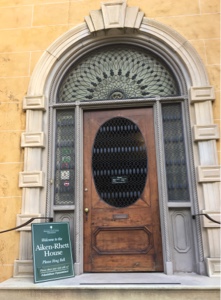 |
| Leaving Charleston via the Arthur Ravenel Bridge |
But first, the beach! By taking the backroads, we added Myrtle Beach, Nags Head and Virginia Beach to our itinerary. Three beaches in three different states--South Carolina, North Carolina and Virginia! If that doesn't make us beach bums, I don't know what will.
Myrtle Beach is the most popular destination along the Grand Strand, an arc of beaches that stretches 60 miles along the South Carolina coast, and a new experience for us.
Unbelievably, we scored a campsite at the end of a row in Myrtle Beach Travel Park, giving us an amazing view of the ocean from inside our RV, the Dawntreader.
Perfect for viewing the sunrise and later soaking up the sun! We were reluctant to leave, but more beaches beckoned.
So we figuratively pulled up anchor on the Dawntreader and sailed north to Nags Head. Not only did we wish to experience the beach there, but we also wanted to pay homage to the Wright brothers who proved that flight was possible at Kitty Hawk.
 |
| Jennette's Pier in Nags Head |
So we figuratively pulled up anchor on the Dawntreader and sailed north to Nags Head. Not only did we wish to experience the beach there, but we also wanted to pay homage to the Wright brothers who proved that flight was possible at Kitty Hawk.
 |
| The Wright Brothers' Memorial |
 |
| From upper left: Replicas of the makeshift buildings used by the Wrights, the park ranger, Tim & I at Memorial Rock, the marker of the final flight's distance |
Rain moved in on Sunday and the temperatures dropped so after attending church, we visited nearby Fort Raleigh, thus ticking off another National Park Service property from the list.
Fort Raleigh is named for Sir Walter Raleigh who in 1584 was granted a charter by Queen Elizabeth to explore and establish an English settlement in the New World. Although he never stepped foot on North America, he sent others to found Roanoke Colony, a colony that became known the Lost Colony when all trace of the settlement and its people disappeared.
Lost is also what happened to us when we made our way to Virginia Beach. The GPS sent us through a maze of backroads that had us trapped before a bridge whose weight limit was 13 tons. Yikes! The Dawntreader weighs twice that. But with cars lined up behind us, there was no alternative except to move forward. Thank goodness, the bridge held but this is not an experience I wish to repeat.
Despite the chilly rainy days, we had a warm time with friends in Virginia Beach and Williamsburg.
Lost is also what happened to us when we made our way to Virginia Beach. The GPS sent us through a maze of backroads that had us trapped before a bridge whose weight limit was 13 tons. Yikes! The Dawntreader weighs twice that. But with cars lined up behind us, there was no alternative except to move forward. Thank goodness, the bridge held but this is not an experience I wish to repeat.
 |
| Pam, Cindy, Tim and Randy |
Despite the chilly rainy days, we had a warm time with friends in Virginia Beach and Williamsburg.
Randy and Pam gave a a tour of the Navy ships in port at Norfolk;




















































